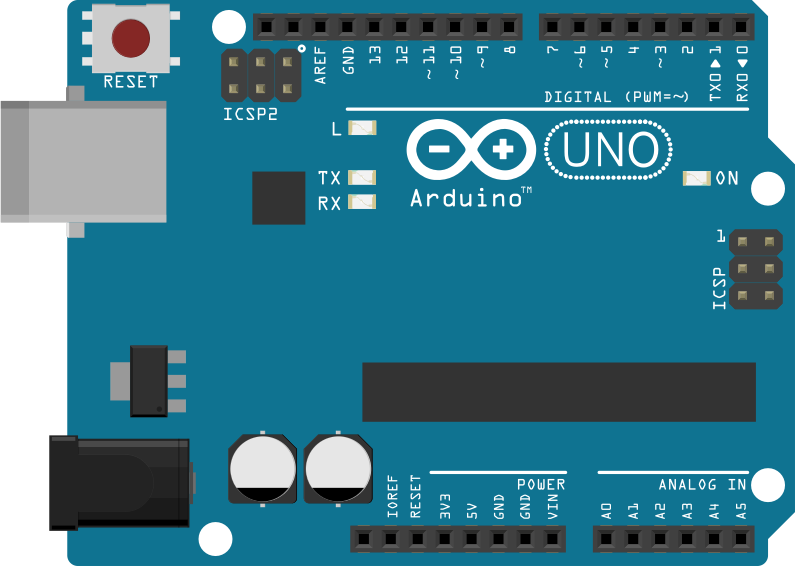Arduino Two Serial Devices
Circuit Connecting Multiple SPI Devices to an Arduino Microcontroller. We connect pin 6, P0W, the wiper terminal of the potentiometer, to the output device that we want to turn on. In the case of the first digital potentiometer, we can a red LED. And for the second digital potentiomter, we connect a green LED. The I2C protocol involves using two lines to send and receive data: a serial clock pin (SCL) that the Arduino or Genuino Master board pulses at a regular interval, and a serial data pin (SDA) over which data is sent between the two devices.
I'm working towards getting an EC and PH sensor from Atlas Scientific to work via an Arduino. My thought was that I could create two software serial instances and read the values accordingly via the computer serial monitor. After trying unsuccessfully for quite a while I've decided I understand very little about how things are working here.For this reason I'm trying to go back to basics and hooked up a button to an LED. When the button is pressed I'm trying to get that value to be 'recorded' in one serial instance 'phSerial' and then printed via the computer serial monitor. I figured if I can get this working, it should be all the basics to get the sensors working in conjunction.I have attached my code below. I'm guessing if you look at my code you'll be able to quickly see where my understanding of how SoftwareSerial works is off.Thanks in advance for the help.-Chase.
The listen method is used to switch between multiple SoftwareSerial instances. You do not need to call it if you are reading from the same device. This is why multiple software serial ports can be difficult to use.
You can only receive from one of them at a time. Data from all the others will be ignored. You have to structure your program to focus on one device at a time, in a round-robin fashion.Also, listen empties the input buffer. Creda storage heater 79164c manual treadmill.
So if any characters were received during the 1-second delay, you just threw them away.You shouldn't use delay. Take look at the 'How to do multiple things at once' et al examples in.
The 'Serial Input Basics' section will help you understand how to receive a response string without using delay.And you should also be aware that SoftwareSerial is very inefficient, because it disables interrupts for long periods of time. This will interfere with other parts of your sketch, or with other libraries.
Since your devices are running at 9600, you could use my library. It is much more efficient. Much.A secondary problem with SoftwareSerial is that it cannot transmit and receive at the same time.
Arduino Two Serial Devices List
So if you send a command to one of the devices, received data will be ignored. NeoSWSerial can TX and RX simultaneously.Here's your sketch with a debounced button and response parsing (without delay). @/devTruly incredible response. The amount of detail is exceptionally helpful to someone trying to learn with little programming experience. I've come to find that a lot of code documentation is written for people who already think like a coder. Unfortunately, that part of my brain hasn't been shaped yet so I'm left wondering things like.'
In a code snippet like phsensor.listen. What is doing the listening? Is it the serial instance of phsensor that's listening, or is it the computer (hardware) instance of serial that's listening on the phsensor serial instance?' This is a fundamental question about how serial (and SoftwareSerial) works.
For me, reading through the documentation takes for granted some foundational knowledge beyond these types of questions. So a gap exists that I often find hard to bridge. Answers like yours bridge the gap wonderfully. So thank you.I will work through your response (and code) slowly and report back with any questions.
I'll also check out the link you sent. Looks really great.Thanks-Chase.
I appreciate the time you took to respond but please clarify what you meant by the above. Are you requesting that I provide more detail to the previous ways I tried to solve the problem?If so, my effort was to not provide all the ways I had failed, but instead provide the simplest example that I could not get working. In doing so, I figured I could work my way up to the more complicated sensor example without leaning too heavily on 'free help.' If you feel it necessary, please respond with how you would prefer I request help in the future.Respectfully,-Chase. No, there is no 'computer (hardware) instance of serial that's listening on the phsensor serial instance'.The Serial variable is an instance of the HardwareSerial class, and it uses special hardware (a UART) to read or write a byte as a serial sequence of bits.
Arduino Software Serial

The UART does all the shifting and timing. The software just provides bytes to the UART.A software serial port, like SoftwareSerial or NeoSWSerial, must read or write each individual bit of each byte, with the correct shifting and timing (aka 'bit banging'). This takes a lot more of the CPU's time.SoftwareSerial is especially bad, because it disables interrupts while it is reading or writing each byte. At 9600, interrupts are disabled for 1ms for each character. A 16MHz Arduino could execute about 10,000 instructions during that time.
Instead, the SoftwareSerial code twiddles its thumbs while the byte is received or transmitted, and that prevents anything else from happening.phSensor.listen simply selects the instance that will handle the interrupts for each bit being received. Other instances will not handle interrupts for their RX pin, so they are essentially ignoring everything. When transmitting, interrupts are disabled to guarantee the bit timings.Cheers,/dev.